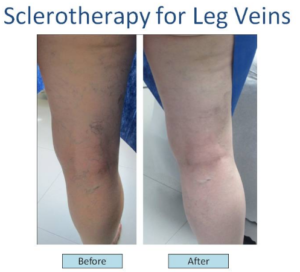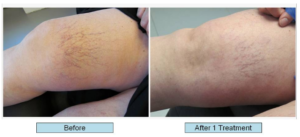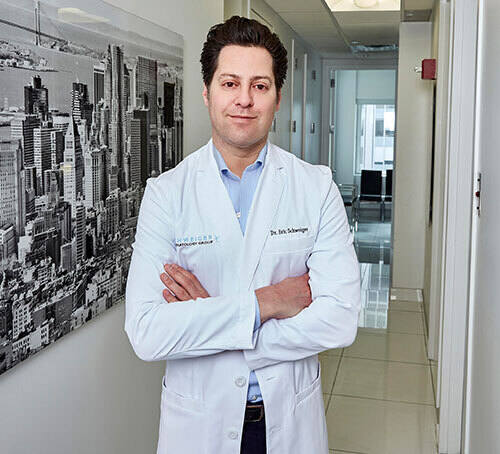Spider Veins
Spider veins are often considered a cosmetic nuisance. Those purplish twisty veins are easily detectable—and often loathed—on the skin. They’re called spider veins by the way they resemble spider’s legs. These blood vessels are typically blue, purple or red in color and most often appear on the legs, though they can also present on other body parts.
What are Spider Veins?
Spider veins are web-like patterns of blood vessels that can easily be seen through the skin. The most common area for spider veins to appear are the legs and feet. While spider veins are usually harmless and pose no medical risks, they are cosmetically undesirable and can sometimes cause pain or aches, in particular if you’ve been standing for extended periods of time.
What Causes Spider Veins
Genetics plays a huge factor in who gets spider veins and who doesn’t. If your mother had spider veins, it certainly increases your chances of inheriting them, but it doesn’t mean for certain that you will. There are other factors that go into who gets spider veins and who doesn’t. Obesity can put a lot of stress on the body and cause spider veins, as can hormonal spikes from pregnancy or going on birth control pills. Other factors that could lead to spider veins are sun exposure, hormonal changes and injuries. As you get older, your chances of developing spider veins increases. Sitting or standing for long periods of time can also translate into spider veins.
Spider Veins on Legs
While the spider veins on legs are the most common area for spider veins to appear, they can pop up on other areas of the body, too. Spider veins are recognizable for their short and jagged lines on the body. Besides the legs, spider veins can appear on the face as well. Why do spider veins appear mostly on the legs? This is due to the fact that the legs bear a great amount of pressure from gravity, body weight and the job of carrying blood from to the top of the body.
There are not too many methods of prevention for spider veins. Some think exercise might help, as being active can help your circulation and possibly prevent spider veins from forming.
The Best Way to Treat Spider Veins is With a Treatment Called sclerotherapy:

- Sclerotherapy is by far the most common in-office treatment for both spider veins. In sclerotherapy, a dermatology provider will use a needle to inject a chemical into the vein. This chemical then causes the vein walls to swell, stick together, and eventually shut down. What this does is it stops the flow of blood, turning the vein into scar tissue. Within a matter of a few weeks, the vein will fade. This treatment is very effective when performed correctly by a certified dermatology provider.
- In sclerotherapy, no anesthesia is required and it can be done in a relatively quick doctor’s appointment. Patients are able to return to normal activity directly following the treatment.
- You may need more than one treatment, typically done 4 to 6 weeks following the initial treatment. Compression stockings are to be work after sclerotherapy to help with healing and to decrease swelling.
Possible Side Effects of Sclerotherapy Include:
- Stinging, red and raised patches of skin or bruises at the injection site. All of which go away shortly following treatment.
- Spots, brown lines, or groups of fine red blood vessels around the treated vein. These also usually go away shortly after treatment.
- Inflammation and swelling around the treated vein, which can be relieved by applying heat or taking aspirin.
For more information on spider veins treatments, email contact@schweigerderm.com.

